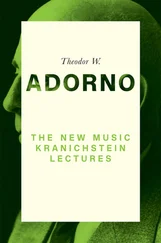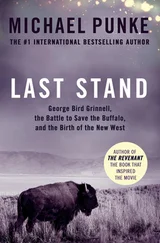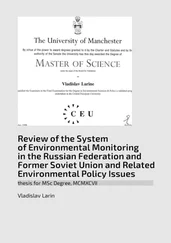The work of David Ricardo (1817) is indeed profoundly marked by Malthus’ (wrong and not so wrong) reasoning. But Ricardo refined it considerably by formulating his theory of agricultural rent. In his analysis, the scarce resource is, quite naturally, agricultural land whose limited availability in the United Kingdom was glaring, while the industry just began its take off. Ricardo framed his famous reasoning in terms of “differential rent”: The most fertile lands are the first to be cultivated, but, as the pressure of demand increases because of the increase of the population, less fertile land must be exploited. Because these new lands are less productive, their unit cost of production is higher, so the selling price required for production on these new lands is also higher. But the market price being unique, the owners of the most fertile land benefit from a “differential” rent. “Diminishing returns” occur because of the lower productivity of the lands gradually being cultivated under the pressure of the consumption of their yields by a growing population.
Ricardo saw globalization and technological progress as solutions to the law of diminishing returns. But he had more confidence in trade than in technology. Considerably refining and extending the “absolute advantages” of Adam Smith, 8he greatly enlarged the circle of countries that could beneficially take part in globalization (potential partners of his home country). He also thought that if agricultural innovations would accelerate (as will be the case throughout the twentieth century), then diminishing returns could be overcome. But Ricardo envisioned a “steady state” of the economy, at the very end of Chapter V of the Principles of Political Economy, where neither globalization nor progress in techniques operate any longer. John Stuart Mill will push the idea much further in the middle of the nineteenth century, all the while the first industrial revolution was booming all around him.
John Stuart Mill and the steady state
In Chapter VI of Book IV of his Principles of Political Economy , published in 1848, John Stuart Mill devotes key developments to what he calls “the Stationary State.” 9The question asked by Mill is that of the fundamental purpose of economic activity: “To what goal? Toward what ultimate point is society tending by its industrial progress?”
Although he believes in wealth creation through the application of liberal economics principles, Mill writes that “the increase of wealth is not boundless: At the end of what they term the progressive state lies the stationary state.” The revolutionary nature of Mill’s questioning of the very finalities of the liberal economy lies in his understanding of the profound impact human societies are already having on the biosphere. “If the Earth must lose that great portion of its pleasantness which it owes to things that the unlimited increase of wealth and population would extirpate from it,” he writes, “for the mere purpose of enabling it to support a larger, but not a better or a happier population, I sincerely hope, for the sake of posterity, that they will be content to be stationary, long before necessity compel them to it.”
But if Mill is pessimistic on the finality and purpose of what we would now call economic growth, he is optimistic on the ability of humans to find a new path to development and believes that “a stationary condition of capital and population implies no stationary state of human improvement.”
It is in the building of fair and shared prosperity that humans will find this new meaning, according to Mill: “Only when, in addition to just institutions, the increase of mankind shall be under the deliberate guidance of judicious foresight, can the conquests made from the powers of nature by the intellect and energy of scientific discoverers, become the common property of the species, and the means of improving and elevating the universal lot.”
Hence, in the middle of the nineteenth century, Mill discovers the sustainability–justice nexus. While a number of scholars today advocate “de-growth” in order to avoid the worst of ecological crises, it was John Stuart Mill, a founding father of the neo-classical school, who first envisioned, at the peak of the first industrial revolution, the transition to a “stationary state” where social and environmental concerns would be addressed jointly.
What twentieth-century economics forgot
For Rodrik (2016), 10modern economics would be different from (and allegedly superior to) other social sciences by its mastery of formal models. Twentieth-century economics would be remarkable for the gradual improvement of its quantitative techniques, building on the invention of the social statistics (by Quetelet) and mathematical formalization (by Cournot), to develop econometrics (Cowles commission), game theory (von Neumann) up to computational and big data economics today. In reality, the question of instruments appears secondary in the constitution of twentieth-century economics. The real rupture is not formal but substantial: it is the break with philosophy, ethics, and justice.
While, as we have just seen, issues of distribution and principles of justice were at the heart of the work of the founding fathers of what has long been called for a good reason “political economy,” they have been marginalized and in the end almost forgotten in the course of the last century. This move away from justice by neo-classical economics was compounded by a focus on short-term policy by its most formidable opponent: Keynesian economics. Let us study these two counter-revolutions in turn.
To begin with, twentieth-century neo-classical economics forgot about inequality. Three key moments marked that reversal. First, it was the admission in 1887 of Charles Dunbar, who viewed economics as a science that should stay clear of ethical considerations, into the American Economic Association (founded in 1885). Dunbar would become AEA’s second President, taking over Richard T. Ely, a progressive who lamented the “contradiction between things as they are and our social ideal.” Second, the development of welfare theorems by Léon Walras in 1920 and the definition of optimality by Vilfredo Pareto in 1930 ended up conflating productive and distributional issues, abandoning inter-personal comparisons and limiting justice policy to the hypothetical possibility – but seldom the reality – of compensation of the “losers” by the “winners” on the market. Finally, the “great dilemma” posited by Arthur Okun between equity and efficiency in the 1970s – the former being assimilated as a loss in terms of the latter – separated even more mainstream economics from distributional concerns.
Hence, in the course of a century, neo-classical economics offered three possible options for considering justice: to deny it, to assume it, and finally to trade it off. In his Richard T. Ely lecture, labor economist Finis Welch went as far as to engage in a reasoned and passionate “defense of inequality,” arguing that: “All economic science proceeds from inequalities.” 11
This defense of inequality in the name of efficiency is, simply put, a serious mistake. Fundamentally, inequality is not just unfair: it is both inefficient and unsustainable. Numerous scholars have been working in the last two decades to demonstrate that the current income inequality crisis (a detailed picture of which can be found in the recently released World Inequality Report 2018) 12hinders progress in key dimensions of human well-being and economic dynamism. Wilkinson and Pickett 13have shown that higher income inequality translates into lower physical and health attainments for US states and comparable countries at the international level (income inequality increasing the prevalence of obesity, drug abuse, stress, mental illness). 14Stiglitz 15has extended the logic of the argument to show how income inequality favors rents to the detriment of innovation and gradually plagues economic development.
Читать дальше












